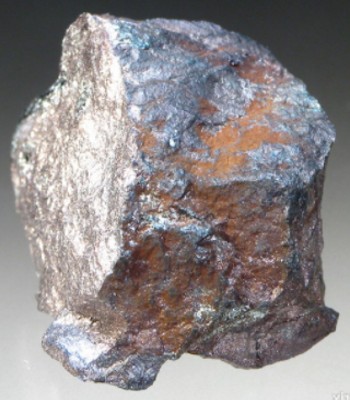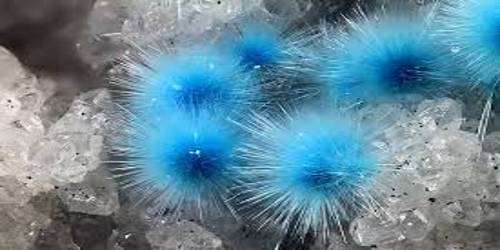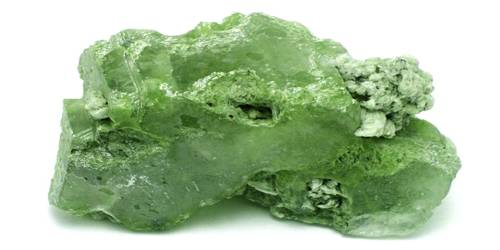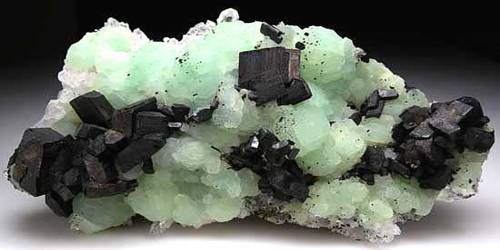Germanite is a rare copper iron germanium sulfide mineral, Cu26Fe4Ge4S32. It was first discovered in 1922, and named for its germanium content. It is a mineral consisting of a copper iron germanium sulfide occurring in metallic reddish gray masses. It is a rare copper iron germanium sulfide mineral discovered in 1922 from the Tsumeb mine, Tsumeb, Otavi, Namibia. It is a member of the colusite group. It was named after the element germanium in its composition.
Germanite contains gallium, zinc, molybdenum, arsenic, and vanadium as impurities.
General Information
- Category: Sulfide mineral
- Formula: Cu26Fe4Ge4S32
- Crystal system: Isometric
- Crystal class: Hextetrahedral (43m)

Fig: Germanite – copper iron germanium sulfide mineral
Properties
Germanite is a brown or red gray mineral having a dark gray streak and metallic luster. It is opaque and has an average density of 4.5 g/cm3 and hardness of 3. Its fractures are brittle as displayed by glasses and non-metallic minerals.
- Color: Reddish grey tarnishing to dark brown
- Crystal habit: Usually massive; rarely as minute cubic crystals
- Tenacity: Brittle
- Mohs scale hardness: 4
- Luster: Metallic
- Streak: Dark grey to black
- Diaphaneity: Opaque
- Specific gravity: 4.4 to 4.6
Occurrence
Germanite occurs in primary Cu–Pb–Zn ores in a dolostone-hosted hydrothermal polymetallic ore deposit. It is closely associated with chalcopyrite, bornite, digenite, sphalerite, galena, enargite, tennantite, pyrite, and renierite.
Its type locality is the Tsumeb Mine in Namibia where it occurs in a hydrothermal polymetallic ore deposit in dolostone in association with renierite, pyrite, tennantite, enargite, galena, sphalerite, digenite, bornite, and chalcopyrite. It has also been reported from Argentina, Armenia, Bulgaria, Cuba, Democratic Republic of Congo (Zaire), Finland, France, Greece, Japan, Republic of Congo (Brazzaville), Russia and the United States.
Information Source:
















